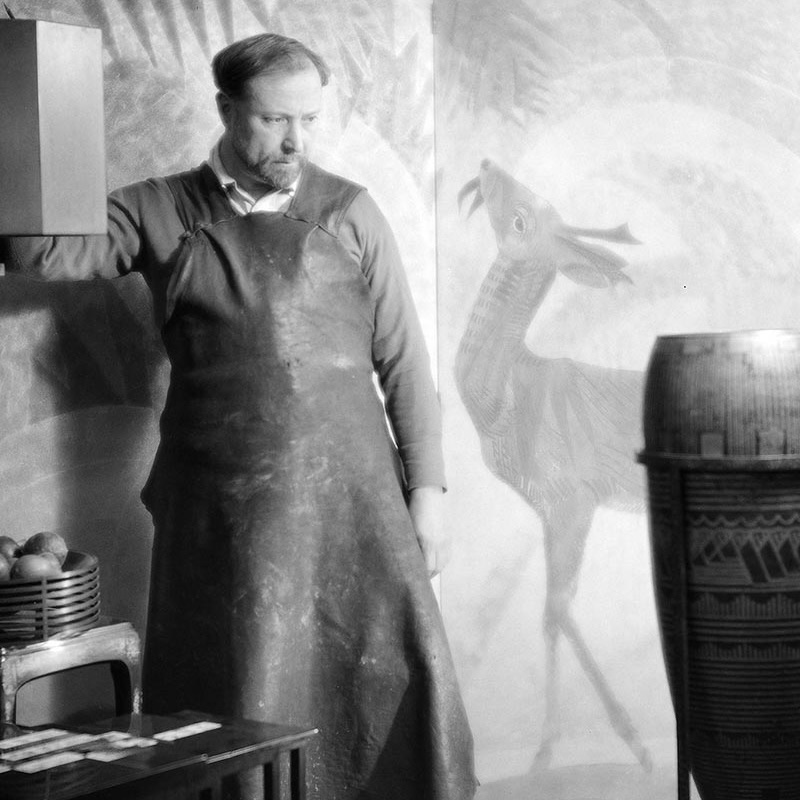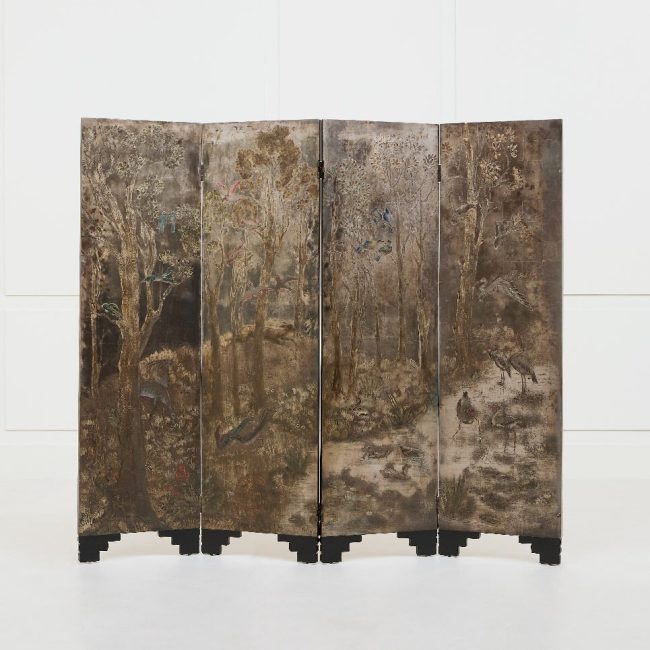Jean Dunand (1877-1942)
Jean Dunand (1877–1942) was a versatile artist whose work encompassed sculpture, copperware, lacquerware and goldsmithing, and one of the undisputed masters of Art Deco. Trained in Geneva and Paris, he distinguished himself through his monumental sculptures and his mastery of the decorative arts. His discovery of Japanese lacquer in 1912 marked a turning point in his career, enabling him to create unique pieces that quickly gained recognition. His reputation was cemented at the International Exhibitions of 1925 and 1931, and through collaborations with big names such as Jacques-Emile Ruhlmann and Solomon Robert Guggenheim.

View full biography
Sculptor, coppersmith, lacquerer, goldsmith and decorator, Jean Dunand is one of the great masters of Art Deco. Born in Lancy, near Geneva, in 1877, he began training at the École des Arts industriels in Geneva at the age of 14, where he excelled in chasing and modelling. After five years of brilliant studies, he obtained a grant from the City of Geneva that enabled him to continue his training in Paris from 1897.
In the capital, he worked in a modelling workshop and attended evening classes at the École nationale des Arts décoratifs. He joined the studio of the sculptor Jean Dampt, an important figure on the Parisian art scene, and took part in several decorative projects, including the winged horses on the Alexandre III bridge. During this period, he regularly exhibited at the Salon de la Société nationale des Beaux-Arts, where his sculptures were noticed and sometimes acquired by institutions.
Around 1905, Dunand definitively turned his career towards the decorative arts, in particular dinanderie, the art of working non-precious metals. He quickly made a name for himself with his sense of volume, the quality of his finishes and the originality of his forms. In 1906, he won a gold medal at the Milan International Exhibition, cementing his reputation in the decorative arts.
A decisive discovery came in 1912: Asian art, and especially Japanese lacquer. Fascinated by this technique, Dunand studied it rigorously, going so far as to bring in Japanese craftsmen to work with him. He developed his own recipes and adapted lacquer to modern objects: screens, furniture, monumental panels and even portraits. His technical mastery and decorative flair gave his works a refined, luxurious aesthetic.
Between the wars, Dunand was one of the most sought-after decorators. He took part in two major events: the 1925 International Exhibition of Decorative Arts and the 1931 Colonial Exhibition. He also collaborated on the interior design of famous ocean liners, including the Atlantique and above all the Normandie, the jewel of French decorative art launched in 1935.
A complete artist, renowned for his technical rigour and formal elegance, Jean Dunand worked with the greatest names of his time (Ruhlmann, Janniot, Dupas) and received commissions from prestigious collectors, including Solomon Robert Guggenheim. He died in 1942, leaving a body of work that was both sophisticated and innovative, emblematic of the Art Deco style.



